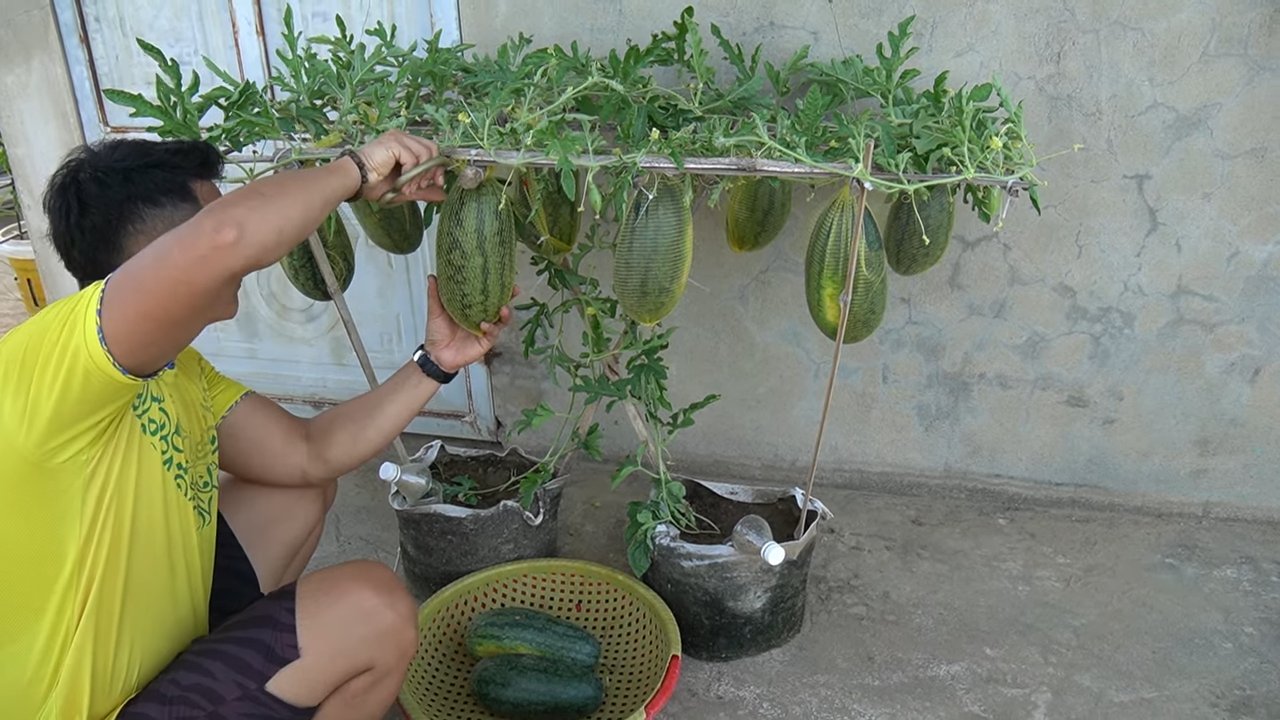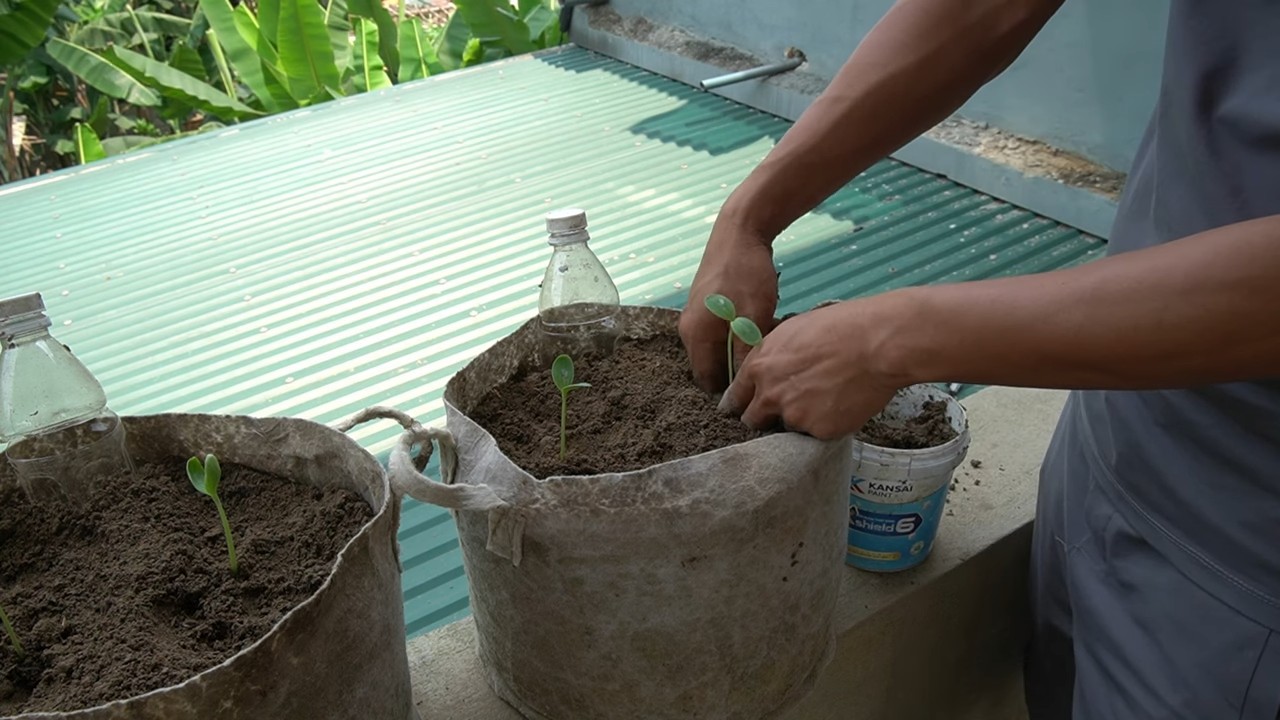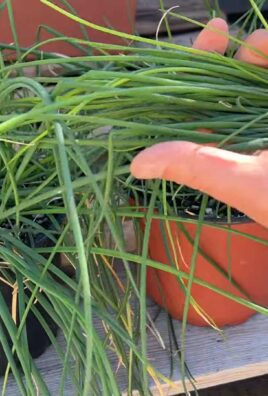Container Watermelon Growing: Imagine biting into a juicy, sweet watermelon you grew yourself, right on your patio! Sounds impossible? Think again! For generations, watermelons were thought of as sprawling giants, demanding vast fields. But I’m here to tell you that with a few clever tricks and a little DIY spirit, you can absolutely cultivate these summer delights in containers, even if you have limited space.
The history of watermelon cultivation stretches back thousands of years, with evidence suggesting they originated in Africa. They’ve since become a symbol of summer celebrations and backyard barbecues worldwide. But let’s face it, not everyone has a sprawling backyard! That’s where the magic of container gardening comes in.
Why should you try container watermelon growing? Because it’s incredibly rewarding! You’ll not only enjoy the satisfaction of nurturing your own food, but you’ll also have access to fresh, delicious watermelons without the need for acres of land. Plus, it’s a fantastic way to add a touch of green to your balcony, patio, or even a sunny windowsill. In this article, I’ll share my favorite DIY tricks and hacks to help you successfully grow watermelons in containers, from choosing the right variety to providing the perfect growing conditions. Get ready to impress your friends and family with your homegrown watermelon bounty!

Growing Watermelons in Containers: A Step-by-Step Guide
Hey there, fellow gardening enthusiasts! Ever dreamed of biting into a juicy, homegrown watermelon but thought you didn’t have the space? Well, I’m here to tell you that you absolutely can grow watermelons in containers! It’s a rewarding project, and with a little know-how, you’ll be enjoying your own sweet harvest in no time. I’ve done it myself, and I’m excited to share my experience with you.
Choosing the Right Watermelon Variety
Not all watermelons are created equal, especially when it comes to container gardening. You’ll want to select a variety that’s naturally smaller and more compact. Here are a few of my favorites:
* Sugar Baby: This is a classic choice for container growing. It produces small, round watermelons that are incredibly sweet.
* Bush Sugar Baby: As the name suggests, this variety has a bushier growth habit, making it even more suitable for containers.
* Golden Midget: These adorable little watermelons turn golden yellow when ripe and have a delicious, honey-like flavor.
* Tiger Baby: A smaller, striped watermelon that matures relatively quickly.
* Crimson Sweet: While technically not a “small” variety, it can be successfully grown in a large container with proper support.
Important Note: Always check the seed packet for the specific variety’s size and growing requirements.
Gathering Your Supplies
Before we dive into the planting process, let’s make sure you have everything you need. Here’s a checklist:
* Large Container: This is crucial! You’ll need a container that’s at least 24 inches in diameter and 24 inches deep. The bigger, the better, as watermelons have extensive root systems. I recommend using a plastic or resin container, as they retain moisture better than terracotta.
* High-Quality Potting Mix: Don’t skimp on the potting mix! Use a well-draining mix that’s rich in organic matter. Avoid using garden soil, as it can become compacted in containers.
* Watermelon Seeds or Seedlings: Choose your desired watermelon variety and purchase seeds or seedlings from a reputable source.
* Trellis or Support System: Watermelon vines can get heavy, so you’ll need a trellis or other support system to keep them off the ground. A tomato cage can work for smaller varieties.
* Slow-Release Fertilizer: Watermelons are heavy feeders, so a slow-release fertilizer will provide them with the nutrients they need throughout the growing season.
* Watering Can or Hose: You’ll need a way to water your watermelon plants regularly.
* Gardening Gloves: Protect your hands from dirt and potential irritants.
* Mulch: Mulch helps retain moisture, suppress weeds, and regulate soil temperature. Straw or wood chips work well.
* Pruning Shears (Optional): For pruning the vines.
Planting Your Watermelon
Now for the fun part! Let’s get those watermelon seeds or seedlings into their new home.
1. Prepare the Container: Start by filling your container with the high-quality potting mix. Leave a few inches of space at the top.
2. Sowing Seeds (If Starting from Seed): If you’re starting from seed, sow 2-3 seeds per container, about 1 inch deep. Water gently to moisten the soil.
3. Transplanting Seedlings (If Using Seedlings): If you’re using seedlings, gently remove them from their nursery pots. Loosen the roots slightly before planting. Dig a hole in the potting mix that’s large enough to accommodate the root ball. Place the seedling in the hole and backfill with potting mix. Water thoroughly.
4. Install Trellis or Support System: Install your trellis or support system now, before the watermelon vines start to grow. This will prevent you from disturbing the roots later on.
5. Mulch Around the Plant: Apply a layer of mulch around the base of the plant to help retain moisture and suppress weeds.
Caring for Your Container Watermelon
Watermelons are relatively easy to care for, but they do have a few specific needs.
1. Watering: Watermelons need consistent moisture, especially during hot weather. Water deeply whenever the top inch of soil feels dry to the touch. Avoid overhead watering, as this can lead to fungal diseases. Aim for watering at the base of the plant.
2. Fertilizing: Watermelons are heavy feeders, so you’ll need to fertilize them regularly. Apply a balanced fertilizer every 2-3 weeks, following the instructions on the fertilizer package. You can also supplement with compost tea or other organic fertilizers.
3. Sunlight: Watermelons need at least 6-8 hours of direct sunlight per day. Place your container in a sunny location where it will receive plenty of light.
4. Pruning (Optional): Pruning can help improve air circulation and encourage fruit production. You can prune away any dead or yellowing leaves, as well as any non-fruiting vines.
5. Pollination: Watermelons require pollination to produce fruit. If you’re growing your watermelons indoors or in an area with limited pollinators, you may need to hand-pollinate them. To hand-pollinate, use a small paintbrush to transfer pollen from the male flowers to the female flowers. Female flowers have a small, immature watermelon at the base of the flower.
6. Pest and Disease Control: Keep an eye out for common watermelon pests, such as aphids, squash bugs, and cucumber beetles. You can control these pests with insecticidal soap or neem oil. Watermelons are also susceptible to fungal diseases, such as powdery mildew and anthracnose. Prevent these diseases by providing good air circulation and avoiding overhead watering. If you notice any signs of disease, treat with a fungicide.
7. Supporting the Fruit: As your watermelons grow, they may become too heavy for the vines to support. You can use slings made from pantyhose or netting to support the fruit and prevent them from breaking off the vine.
Harvesting Your Watermelon
The moment you’ve been waiting for! Harvesting your homegrown watermelon is a truly satisfying experience.
1. Determining Ripeness: Knowing when to harvest your watermelon can be tricky. Here are a few signs that your watermelon is ripe:
* The tendril closest to the fruit turns brown and dries up.
* The underside of the watermelon (where it rests on the ground) turns from white to yellow.
* The watermelon sounds hollow when you thump it.
* The rind becomes dull and less shiny.
2. Harvesting: Once you’ve determined that your watermelon is ripe, use a sharp knife or pruning shears to cut it from the vine. Leave a few inches of stem attached to the watermelon.
3. Enjoy! Now it’s time to enjoy the fruits (or rather, the watermelon) of your labor! Slice it up and savor the sweet, juicy flavor of your homegrown watermelon.
Troubleshooting
Even with the best care, you may encounter some challenges along the way. Here are a few common problems and how to address them:
* No Fruit Production: This could be due to a lack of pollination. Try hand-pollinating your watermelons or attracting more pollinators to your garden.
* Small Fruit: This could be due to a lack of nutrients or water. Make sure you’re fertilizing and watering your watermelons regularly.
* Cracked Fruit: This could be due to inconsistent watering. Try to maintain a consistent watering schedule.
* Pest Infestations: Treat pest infestations with insecticidal soap or neem oil.
* Fungal Diseases: Prevent fungal diseases by providing good air circulation and avoiding overhead watering. Treat with a fungicide if necessary.
Additional Tips for Success
Here are a few extra tips to help you grow the best container watermelons possible:
* Choose the Right Container Size: I can’t stress this enough! A large container is essential for success.
* Use High-Quality Potting Mix: Don’t skimp on the potting mix! A well-draining mix that’s rich in organic matter is crucial.
* Provide Adequate Sunlight: Watermelons need at least 6-8 hours of direct sunlight per day.
* Water Regularly: Watermelons need consistent moisture, especially during hot weather.
* Fertilize Regularly: Watermelons are heavy feeders, so you’ll need to fertilize them regularly.
* Support the Fruit: Use slings to support the fruit and prevent them from breaking off the vine.
* Be Patient: Watermelons take time to mature, so be patient and don’t give up!
Growing water

Conclusion
So, there you have it! Growing watermelons in containers might seem like a daunting task, but with the right approach and a little bit of patience, you can absolutely enjoy the sweet taste of homegrown watermelon, even without a sprawling garden. This DIY container watermelon growing method is a game-changer for urban gardeners, balcony enthusiasts, and anyone with limited space who dreams of harvesting their own juicy melons.
Why is this a must-try? Because it democratizes watermelon growing! No longer is this delicious fruit exclusive to those with acres of land. You can bring the farm-to-table experience right to your doorstep, controlling the soil quality, watering schedule, and overall environment to ensure the best possible flavor and yield. Plus, there’s an undeniable satisfaction in nurturing a plant from seed to fruit, especially when that fruit is a vibrant, refreshing watermelon.
But don’t stop there! Experiment with different watermelon varieties. Bush varieties like ‘Bush Sugar Baby’ or ‘Golden Midget’ are particularly well-suited for container growing. Consider adding companion plants like marigolds or basil to your container to deter pests and attract pollinators. You can also adjust the fertilizer blend based on your soil test results to optimize nutrient availability.
And remember, success in container watermelon growing hinges on consistent watering, adequate sunlight, and proper support for the developing fruit. Don’t be afraid to get your hands dirty, monitor your plants closely, and adjust your techniques as needed.
We wholeheartedly encourage you to give this DIY container watermelon growing method a try. It’s a rewarding experience that will not only provide you with delicious fruit but also connect you with the natural world in a meaningful way. Once you’ve harvested your first container-grown watermelon, we’d love to hear about your experience! Share your photos, tips, and challenges in the comments below. Let’s build a community of container watermelon growers and learn from each other’s successes and failures. Your insights could help someone else achieve their watermelon-growing dreams! So go ahead, get planting, and get ready to enjoy the sweet taste of success!
Frequently Asked Questions (FAQ)
What is the best size container for growing watermelons?
The ideal container size for growing watermelons is at least 20 gallons, but larger is always better. A 25-30 gallon container will provide ample space for the roots to develop and support the growth of a healthy watermelon plant. The larger the container, the more moisture it will retain, reducing the frequency of watering. Make sure the container has adequate drainage holes to prevent waterlogging, which can lead to root rot.
Which watermelon varieties are best suited for container growing?
Bush or dwarf watermelon varieties are the most suitable for container growing due to their compact size. Some popular choices include ‘Bush Sugar Baby,’ ‘Golden Midget,’ ‘Tiger Baby,’ and ‘Yellow Doll.’ These varieties are bred to produce smaller vines and fruits, making them manageable in a container environment. Avoid larger, vining varieties like ‘Charleston Gray’ or ‘Crimson Sweet,’ as they require significantly more space and are less likely to thrive in a container.
How much sunlight do container watermelons need?
Watermelons are sun-loving plants and require at least 6-8 hours of direct sunlight per day to thrive. Choose a location for your container that receives full sun throughout the day. If you live in a particularly hot climate, you may need to provide some afternoon shade to prevent the leaves from scorching. Insufficient sunlight can result in poor fruit production and smaller, less flavorful watermelons.
What type of soil is best for container watermelons?
A well-draining, nutrient-rich potting mix is essential for growing watermelons in containers. Avoid using garden soil, as it can become compacted and doesn’t drain well. A good potting mix should consist of a blend of peat moss, perlite, and vermiculite. You can also amend the potting mix with compost or aged manure to provide additional nutrients. A slightly acidic to neutral pH (6.0-7.0) is ideal for watermelon growth.
How often should I water my container watermelon plant?
Watermelons are heavy drinkers and require consistent watering, especially during hot weather. Check the soil moisture daily and water thoroughly when the top inch of soil feels dry to the touch. Avoid overwatering, as this can lead to root rot. The frequency of watering will depend on the weather conditions, the size of the container, and the growth stage of the plant. During fruiting, watermelons require even more water to support fruit development.
Do I need to fertilize my container watermelon plant?
Yes, watermelons are heavy feeders and require regular fertilization to produce healthy vines and fruits. Use a balanced fertilizer (e.g., 10-10-10) during the early stages of growth and switch to a fertilizer higher in phosphorus and potassium (e.g., 5-10-10) once the plant starts to flower and set fruit. Follow the instructions on the fertilizer package for application rates. You can also supplement with liquid seaweed or fish emulsion for added nutrients.
How do I support the watermelon fruit in a container?
As the watermelon fruit grows, it can become quite heavy and may need support to prevent the vine from breaking. You can use a sling made from netting, fabric, or pantyhose to support the fruit. Tie the sling to a sturdy stake or trellis. Alternatively, you can place the watermelon on a bed of straw or wood chips to protect it from direct contact with the soil.
How do I know when my container watermelon is ripe?
Determining when a watermelon is ripe can be tricky, but there are a few telltale signs to look for. The tendril closest to the fruit should turn brown and dry. The spot where the watermelon rests on the ground (the ground spot) should turn from white to yellow. When you thump the watermelon, it should sound hollow and dull. These are general guidelines, and the specific indicators may vary slightly depending on the watermelon variety.
Can I grow more than one watermelon plant in a single container?
It’s generally recommended to grow only one watermelon plant per container, especially if you’re using a smaller container (20-25 gallons). Growing multiple plants in the same container can lead to overcrowding, competition for nutrients and water, and reduced fruit production. If you’re using a very large container (30 gallons or more), you may be able to grow two plants, but be sure to provide adequate spacing and monitor the plants closely.
What are some common pests and diseases that affect container watermelons?
Common pests that can affect container watermelons include aphids, squash bugs, and vine borers. Diseases include powdery mildew, fusarium wilt, and anthracnose. Regularly inspect your plants for signs of pests or diseases and take appropriate action. You can use insecticidal soap or neem oil to control pests and fungicides to treat diseases. Proper watering, good air circulation, and healthy soil can also help prevent pest and disease problems.




Leave a Comment